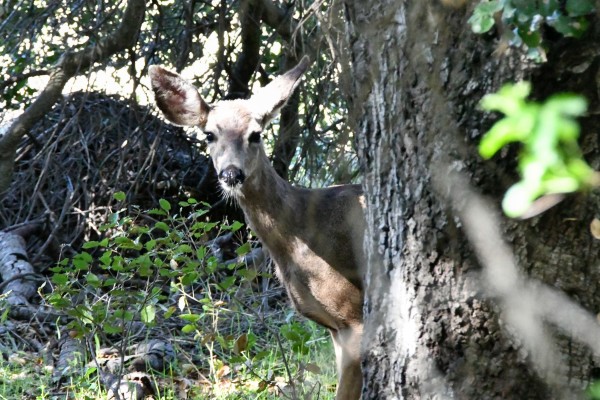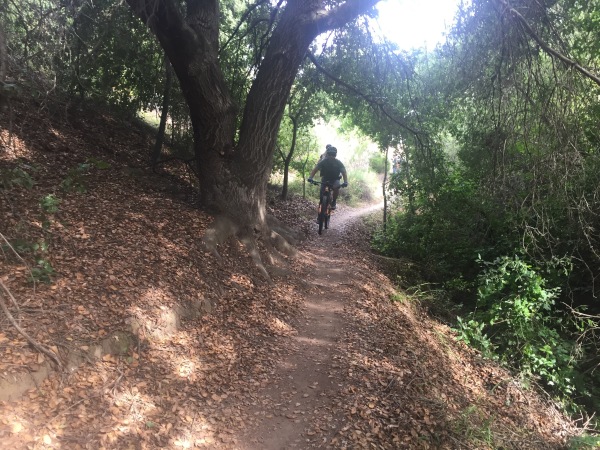Being born and raised in Laguna Canyon, I had the simple pleasure as a child of exploring the hills whenever and wherever I chose. I can see how sometimes those of us who frequent the wilderness parks today feel we can make decisions about “our” local open space. After all, aren’t we the ones who fought to protect it?
Haven’t you heard (or maybe even said yourself) something like: “Back in the day, I used to ride my horse/bike/VW Van along the cattle trails and up the hills. I never did any damage, and nobody cared.”
 The truth is, that was when most of the wilderness didn’t have the protections it does today. After all, much of it was grazing land. Today, this protected wilderness has a name: Aliso and Wood Canyons Wilderness Park, Laguna Coast Wilderness Park, Crystal Cove State Park, Irvine Open Space, collectively known as the South Coast Wilderness. Thankfully, this land is protected from urban development houses, shopping centers, golf courses), overuse, and errant – albeit well-intended – explorers. Just like I used to be.
The truth is, that was when most of the wilderness didn’t have the protections it does today. After all, much of it was grazing land. Today, this protected wilderness has a name: Aliso and Wood Canyons Wilderness Park, Laguna Coast Wilderness Park, Crystal Cove State Park, Irvine Open Space, collectively known as the South Coast Wilderness. Thankfully, this land is protected from urban development houses, shopping centers, golf courses), overuse, and errant – albeit well-intended – explorers. Just like I used to be.
What does “protected wilderness” really mean?
OC Parks, which manages Laguna Coast Wilderness Park and Aliso and Wood Canyon Wilderness Park, states that their vision is to: “Preserve Orange County parks in perpetuity for the recreation, education, and inspiration of all visitors.” Preservation and recreation can work together, and frequently do.
We need to take that one step further in our parks, and look at the wilderness park designation.
Laguna Coast and Aliso and Wood are wilderness parks, not turf or recreation parks. They’re part of the Natural Communities Conservation Plan (NCCP), which is an initiative of the State of California, in concert with numerous private and public partners, to “… plan for the protection and perpetuation of biological diversity.”
In other words, these parks were preserved first and foremost for the habitat. Recreation comes second. We can’t lose sight of the reason why this land was preserved in the first place.
It’s not just OC Parks and the NCCP. There are a variety of entities regulating the use of our rare and biodiverse coastal sage scrub habitat. Here’s just a sample of the agencies and organizations we work with to keep our parks open and the habitat healthy:
- NCC – Natural Communities Coalition
- CDFW – California Department of Fish and Wildlife
- USFW – US Fish and Wildlife Service
- TNC – The Nature Conservancy
- CCC – California Coast Commission
Why are all these entities relevant? Because, collectively, they govern and direct local land managers and guide the public use of our precious natural resources.
If we want to change wilderness park rules, it is not a simple question for the local rangers, or staff from a nonprofit organization like Laguna Canyon Foundation. 
It’s more complicated than that, and it gets even more complicated when we’re talking about access issues. We get requests for keeping the parks open later, opening access on unauthorized trails, and allowing (or banning) e–bikes.
Laguna Canyon Foundation has always promoted access for responsible recreation. After all, we believe that people protect the things they love, and being able to experience our parks is what leads to that deep connection. The connection that inspired thousands of people to protest the original developments in Laguna Canyon, and that ultimately led to the permanent preservation of over 22,000 acres. But quite simply, we don’t make the rules.
It is not Laguna Canyon Foundation’s role to make policy. Instead, it’s our position to support OC Parks in their efforts to both preserve the open space for future generations and provide access for the enjoyment of all.
OC Parks states, “Currently e–bike use is not allowed in County wilderness parks based off of existing County Ordinance and the conservation plans and easements.”
Because of increased public interest, new laws about e-bikes (AB1096), and the delicate balance between preservation and recreation, OC Parks has reached out to the regulatory agencies to get clarification on e–bikes and their impact on native habitat.
We often say the open space is our backyard – but it’s not our personal backyard or personal playground. It’s a communal backyard that provides recreation for many types of users, yes – but is also a community, a biodiverse ecosystem, for the plants and wildlife that call it home. That will always come first for these wilderness parks, as it should.
Let’s all support the work OC Parks does and continue to abide by their rules. Their vision to protect and preserve is one we can all understand.
